Sewing Elastic to a Swimsuit
For most swimsuits, ready-to-wear or handmade, the edges of the swimsuit are stabilized and finished with elastic. The elastic is sewn to the inside of the suit and then folded over and topstitched. It’s really quite simple to do and with a few extra tips and tricks, you can have a perfectly awesome elastic insertion on your own swimsuit!
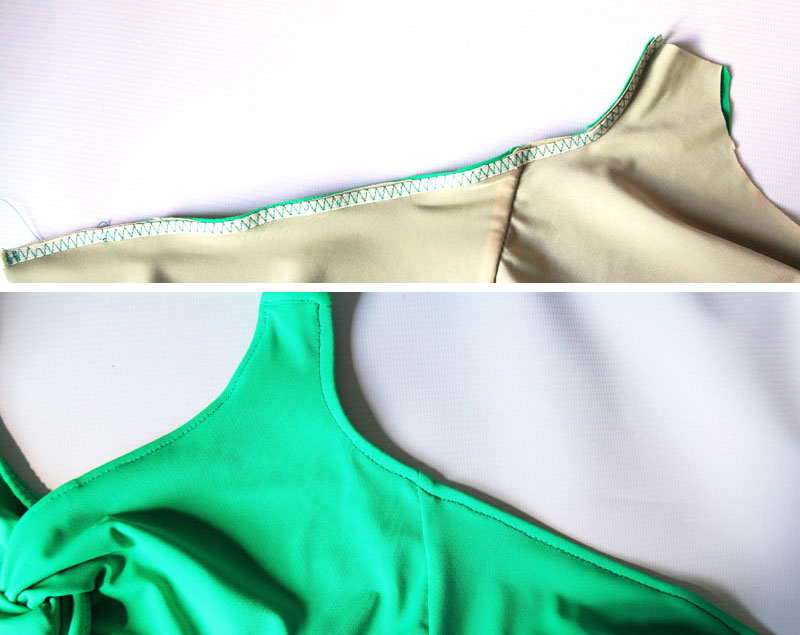
Stitches
When you sew the elastic to the inside of your swimsuit, you should use a wide zig-zag. If you have a stretch zig-zag stitch on your machine, this is a great place to use it. If not, use your normal zig-zag on its widest setting. This will securely attach the elastic to the suit and allow it to stretch. When you fold the elastic over, you can use the same wide zig-zag, a narrower zig-zag, or a straight stretch stitch (also called a lightning stitch) depending upon how you want it to look from the outside.
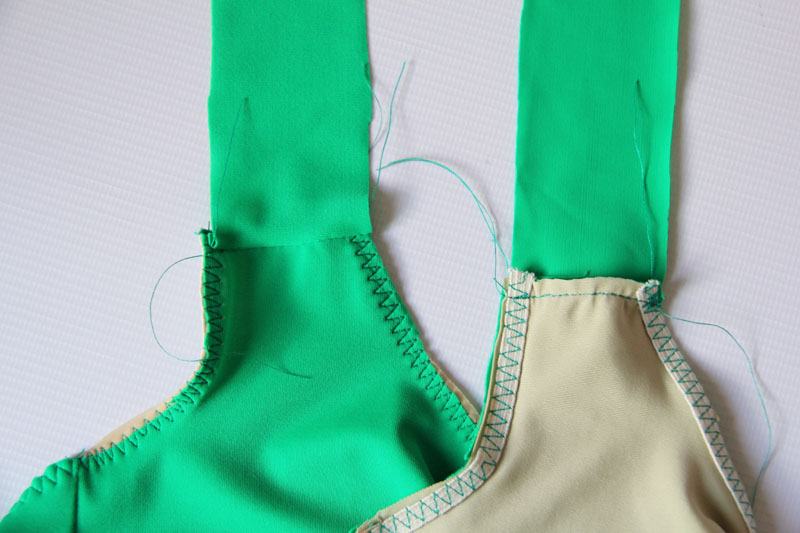
Alignment
When you sew the elastic to the inside of your swimsuit, don’t align the elastic to the very edge of the fabric. Instead, sew it 1/16th (or just a tiny bit) in from the edge of the fabric. This way, when you fold it over to the inside, that little bit of extra fabric acts as a turn-of-the cloth to cover the edge of the elastic on the inside so it is invisible. However, don’t worry if your alignment isn’t perfect! The swimsuit on the right is an example of the ideal. For the swimsuit on the left, the lining and main fabric got off by a bit. It’s perfectly okay. The inside won’t be quite as beautiful, but it will be just as strong and functional.
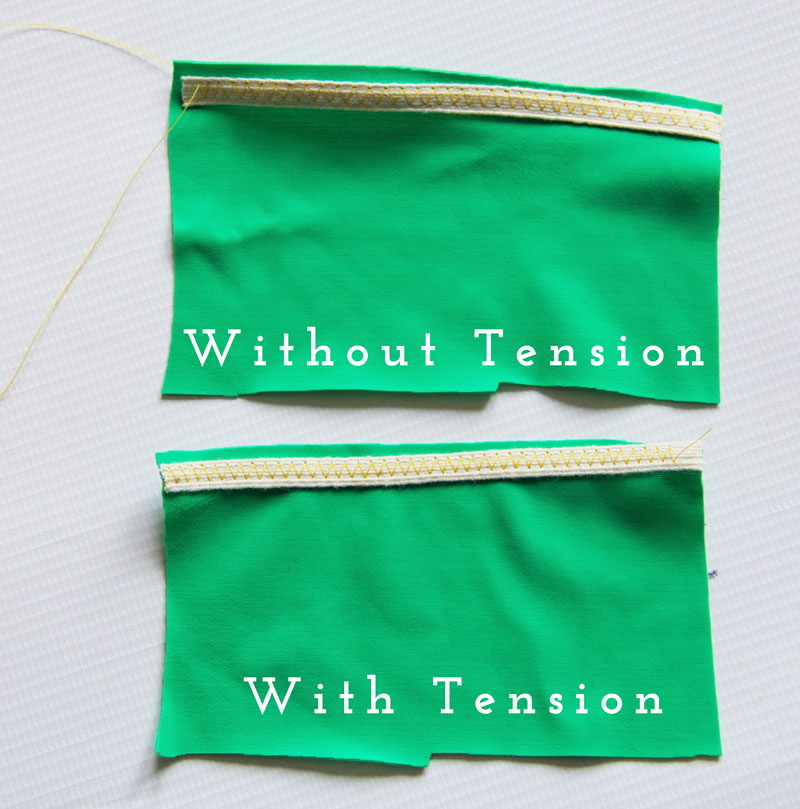
Tension
For most of your swimsuit, you don’t want to stretch either the fabric or the elastic as you sew it. The easiest way to make this happen is to keep a bit of tension on the elastic as you sew. I know this sounds a bit counterintuitive, but you shouldn’t be stretching the elastic, just holding it taught as you sew to keep the edge of the suit from rippling after you install the elastic. If you’re a knitter, think of it similar to how you hold your yarn when knitting – you’re not holding it tight but instead just keeping a bit of tension on it as you go. The difference is subtle, but you can see that the bottom sample lies totally flat while the top ripples a bit. When it’s on your body, the difference won’t be noticeable as it stretches a lot to fit your body regardless.
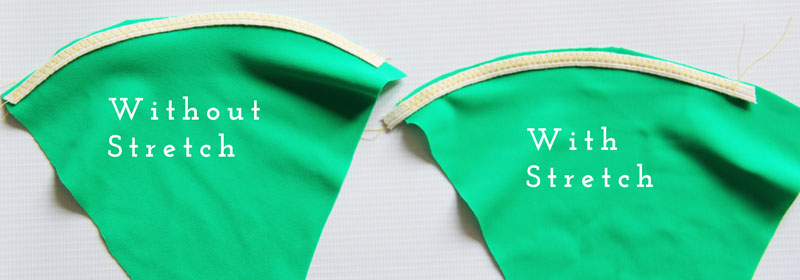
Convex Curves
The one place that you do always want to put a bit of stretch in your elastic while you sew is around any convex curve. This is often the top of the swimsuit cup and around the cheek on the bottom (although some patterns, like the Nautilus Swimsuit, give you specific instructions about stretching the elastic more in certain areas. Follow the instructions first!). Putting a tiny bit of stretch in the elastic as you sew allows the fabric to grip nicely to your body instead of gaping away. The difference is subtle if you are looking at the fabric flat, but it really makes a difference when you place it around a curvy part of the body.
The best way to figure out the difference between putting tension on and stretching your elastic is to practice sewing on some fabric scraps. The settings and feeling that you use will be different depending upon your fabric, elastic, stitch, and sewing machine feed. If you find it helpful, Erin from Tuesday Stitches has put together a little video of what it looks like.

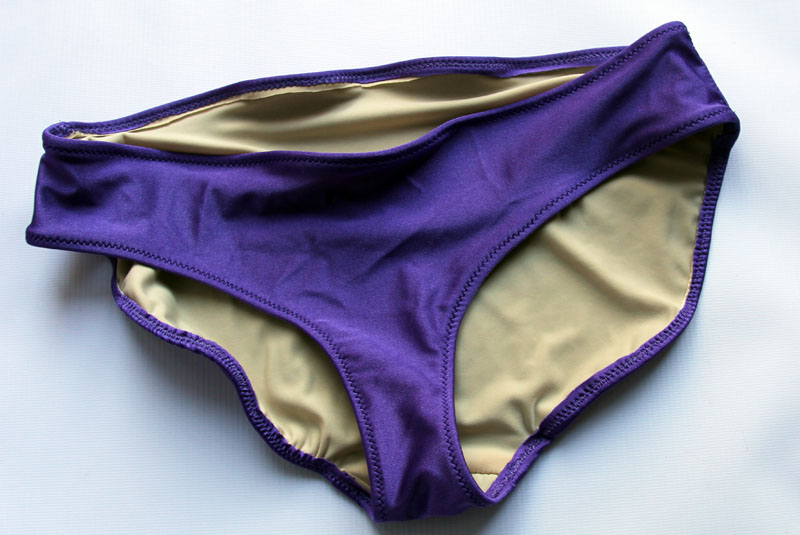
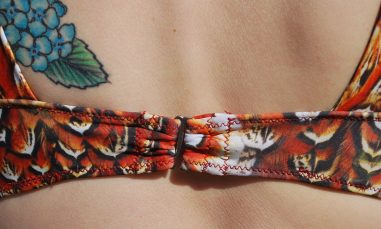

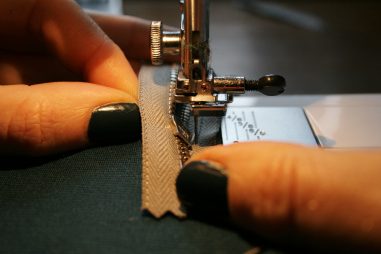
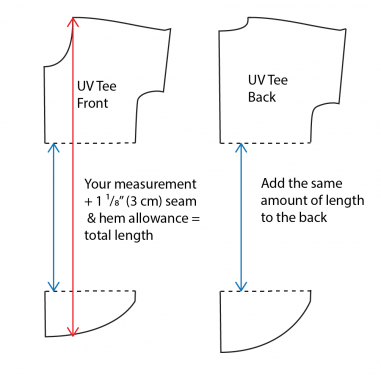
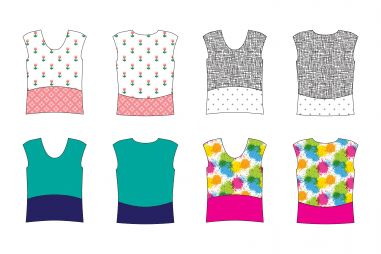
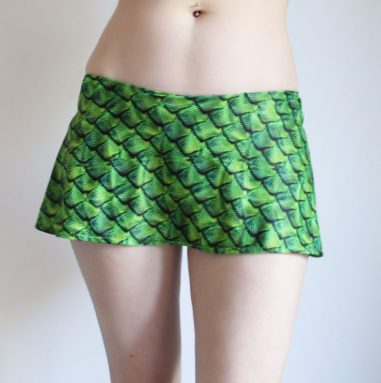
Excellent demonstration. Thank you.
Thanks!! What kind of sewing machine do you have?
I have several sewing machines, but do most of my sewing on a Pfaff Quiltstyle 2042 that I bought in high school and an old Kenmore that my mom bought in high school.
Thank you for a fantastic demonstration! My problem is that when i fold the swimwear to do a cover stitch, the elastic loses its elasticity and it becomes a flat seam without any stretch! Can u PLEASE HELP me!! Thank you
My first suggestion would be to gently stretch the elastic as you sew but make sure that you aren’t stretching the swimsuit fabric. I’m guessing that you’re stretching them both as you sew which can lead to a seam that doesn’t have any stretch left to give.
I am having the same problem here :-( everything looks fine, until I turn and topstich it. then it looks flat and wavy. And it doesn’t adjust to the body nicely, especially under the bust.
Hi,
I am going to replace elastic on the leg openings of my swim suit. How do I know the length of the elastic? I know it should be shorter than the circumference of the opening.
Thank you
Cindy
back neck curve gets shape of letter u.after attching elastic elastic stands up on the curve.other placeses get on flat.i am using 4thread over lock mechine.pl advise me
How the elastic hugs the curve will depend upon how much of a curve there is on the garment and how much tension you put on the elastic when you sew it. Often the swimsuit elastic may look a bit distorted after you sew it on but once it is stretched onto a body it looks just fine.
What kind of sewing machine has stretch stitch built in. What to sew and the patterns I’m looking at says stretch stitch. Would like to see my own summer clothes.
Most modern sewing machines have some sort of stretch stitch built in. A standard zig-zag can also be used as a stretch stitch which you will find on any machine that has more than 1 stitch option.